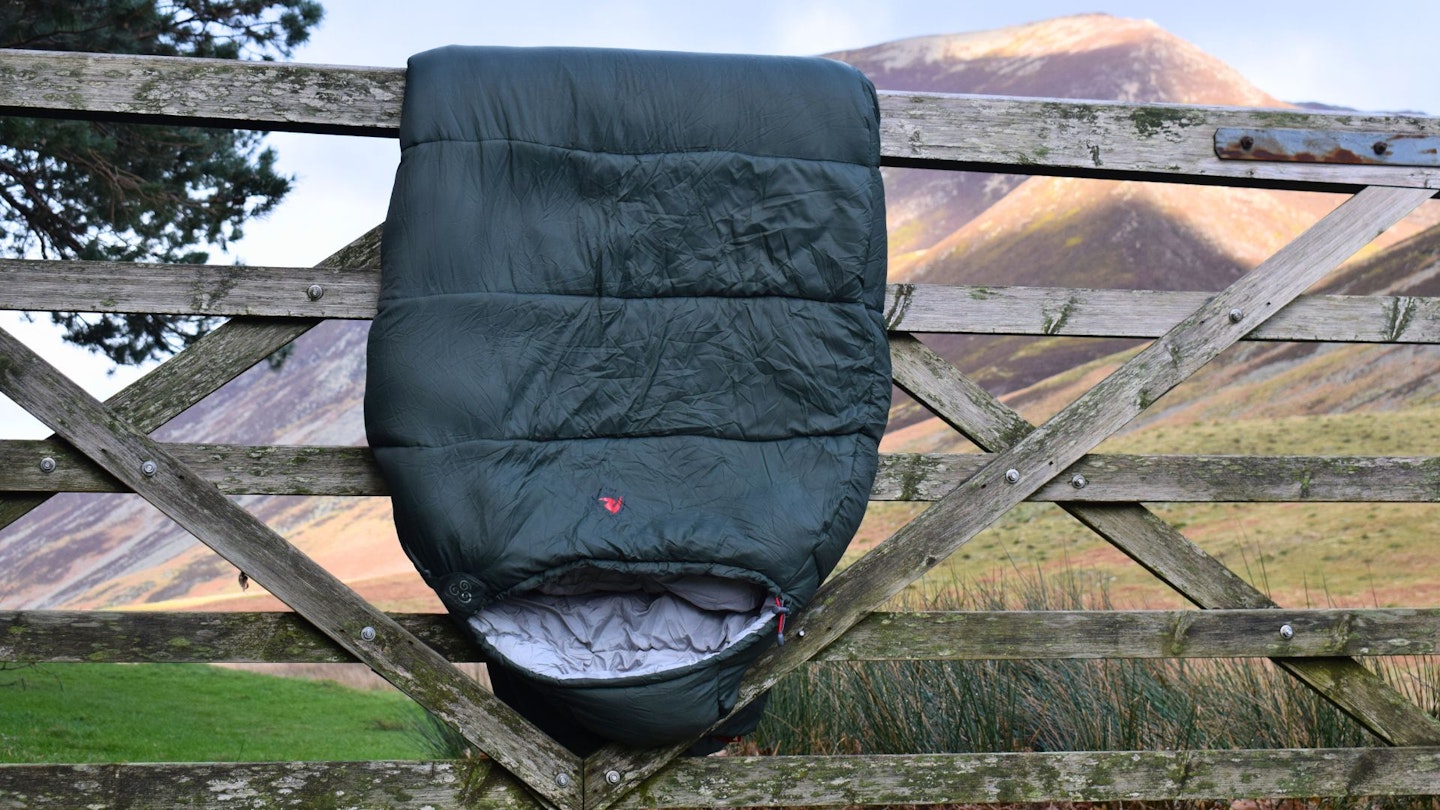If shaving grams off your base pack weight is your priority when buying a sleeping bag, you’ll have to invest in a down-filled bag. Down is the undoubted champion when it comes to a bag’s warmth-to-weight ratio. However, if weight is not a big concern for you, and instead price is a more important factor, you should opt for a synthetic sleeping bag.
Synthetic sleeping bags offer better value for money, easier maintenance and improved insulation in damp conditions. For beginner and price-conscious campers, they are a sensible choice.
The Robens Glacier III –9C features synthetic insulation – a fill of fluffy 100% polyester known as AirThermo. This delivers a warm, cosy sleeping experience even in sub-zero temperatures, and all for less than £150.
 LFTO
LFTOwww.robens.de
Pros
- Great value
- Impressive temperature stats
- PFC-free
- Good design
Cons
- Reasonably heavy
- Not the most packable
- Only one size
| Sizes | One size |
| Packed size | 36 x 26 cm |
| Weight | 1.795kg |
| Insulation | AirThermo polyester |
| Materials | 40D 290T nylon shell, 30D 290T polyester Taffeta lining |
| Temperature rating | Comfort -3°C | Limit -9°C |
Temperature ratings
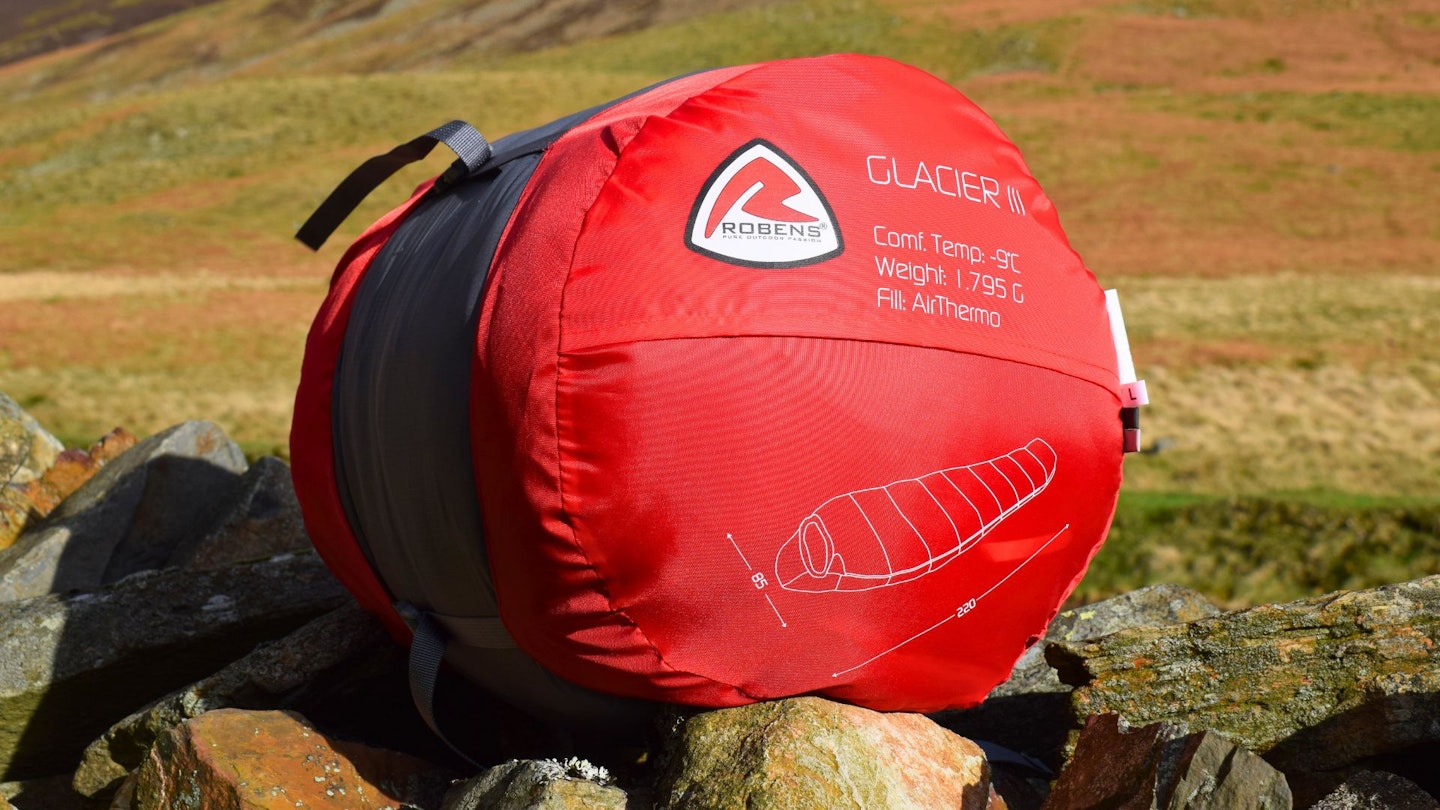
The Glacier III -9C has the following EN/ISO lab test temperature ratings: comfort -3C, comfort limit -9C and extreme -28C. These are superb stats for the price. The downside is that the bag weighs 1,795g, which is more than 1kg heavier than the Rab Neutrino 400, for example. This is usually the case with synthetic sleeping bags. They offer superb warmth for the price, but they’re heavy – not exactly ideal for long-distance treks or tough mountain missions.
But for many, the extra weight won’t matter when the price is so good. Indeed, Danish brand Robens is a wise choice if you’re looking for a well-priced, affordable sleeping bag. The Robens Spire III and Robens Icefall Pro 900 have both won Best Value awards from us in the past.
Insulation type, fill power, and fill weight

There is no goose or duck down in this sleeping bag. Instead the Glacier III -9C is stuffed with a 100% polyester fill, insulation Robens calls AirThermo. The structure of the polyester’s hollow fibres is designed to trap an insulating layer of warmth within the fibres, thus providing decent levels of insulation and loft.
It would be wrong to suggest, however, that this synthetic insulation fluffs up as opulently as down. The insulation is not as thick or voluminous. This is because the synthetic fill is more like a sheet of flat, low-profile, wadded insulation, rather than a plumper, loftier, cluster-like fill in baffles. The construction technique in the Glacier III -9C places a double layer of this insulation on the top and two layers on the bottom too.
Unlike down, synthetic insulation does not have a fill power rating. Instead synthetic sleeping bags are graded in GSM (grams per square metre). The higher the figure, the thicker, heavier and warmer the insulation will be. In the Glacier III the top filling has two layers with a 270g/m2 rating, while the two layers on the bottom are graded 160g/m2. These are both higher-than-average grades, ensuring the insulation feels thick and warm.
Robens has placed a higher grade of insulation on the top of the sleeping bag because this is where you need it most, across your core. Insulation on the bottom, below the body, tends to be less important. This is because you will gain some warmth from your sleeping mat, plus any insulation below your body tends to be squashed and thus is less thermally efficient.
Pack size and weight
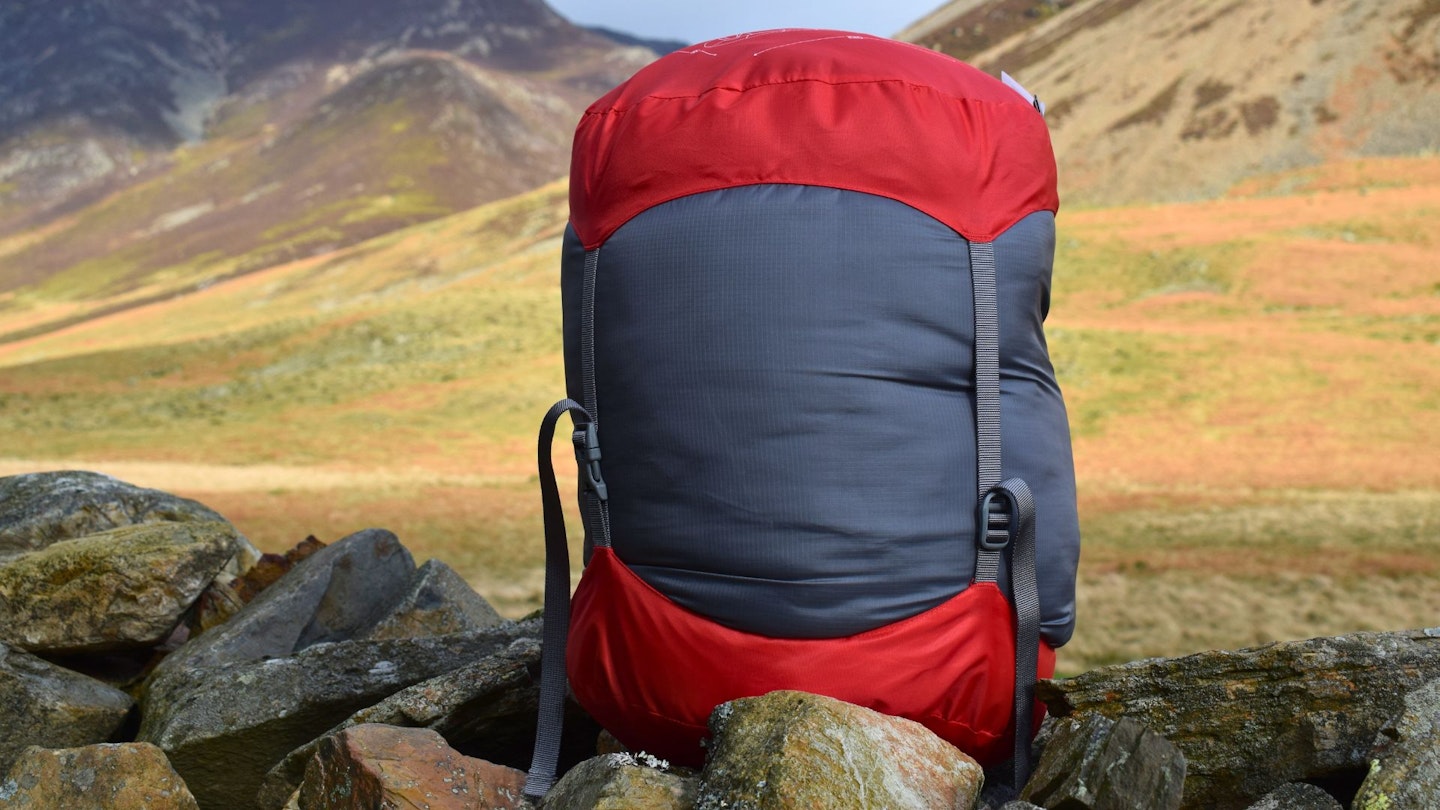
The Robens Glacier III -9C clocks in at a weight of 1795g. This is definitely on the heavier end of the spectrum. For some campers the high weight will be a deal breaker; for others it won’t matter, particularly those who prioritise price over gram savings.
The Robens Glacier III -9C compresses down to a packed size of 36cm x 26cm, when packed inside the included stuff sack. This is a larger packed size than most lightweight sleeping bags and it does feel quite bulky and large. It may well fill up half of your backpack. But, if you’re using a large 65L backpacking pack or similar, it shouldn’t be an issue.
The Robens Glacier III -9C bag does not come with a home storage sack.
Materials and sustainability
The shell of this sleeping bag is made from a 40-denier 100% ripstop nylon with a PFC-free DWR (durable water resistant) coating. The lining fabric is a 30-denier 100% polyester taffeta – a material Robens says is fast-wicking and performs well in damper climates.
Compared to the shell and liner fabrics of ultralight bags, which can feel worryingly thin and flimsy, as if they might rip to shreds if caught in a zipper, the Robens Glacier III feels a bit more robust and sturdy. This is reassuring and gives the bag a bit more toughness for mountain use. The interior of the bag still feels soft and cosy though.
None of the materials used in this sleeping bag are recycled, so the eco credentials are not particularly strong. Although, Robens does say it's PFC-free.
Size and shape
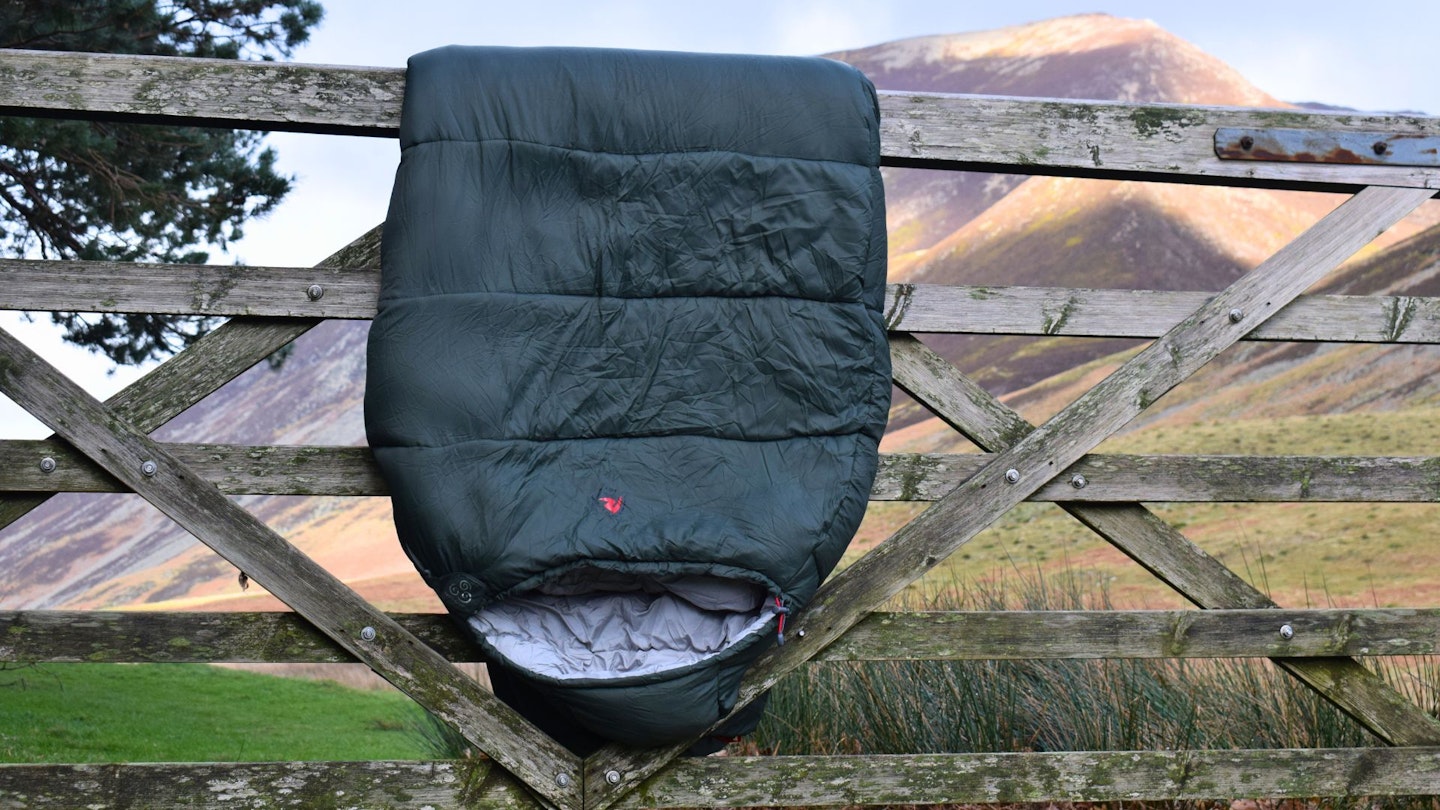
The Robens Glacier III -9C has a tapered, mummy-shaped design. The taper is not particularly harsh, so the bag strikes a nice balance between technicality and comfort. Some of Robens’ sleeping bags such as the Couloir range have a “technical mummy” shape with a more aggressive taper. The Glacier III -9C, however, has what Robens calls a “standard mummy” shape, which has a snug fit but offers an extra bit of roominess and space for movement, without compromising on thermal efficiency.
Robens says the bag is suitable for anyone up to 195cm (6ft 5”) tall, meaning the Glacier III bag is longer than many others. For me, at a height of 5ft 9”, it is perhaps slightly on the long side, but it still works fine. But for shorter individuals it may be too lengthy.
The bag is officially 220cm in length. The width at the shoulder is 85cm and at the footbox it’s 55cm. These aren’t the circumference measurements of ‘girth’, as some other brands such as Rab and Therm-a-Rest state, so they can’t be compared like-for-like.
The Glacier III -9C is only available in one size – there are no women’s specific, small, long or wide options.
Features
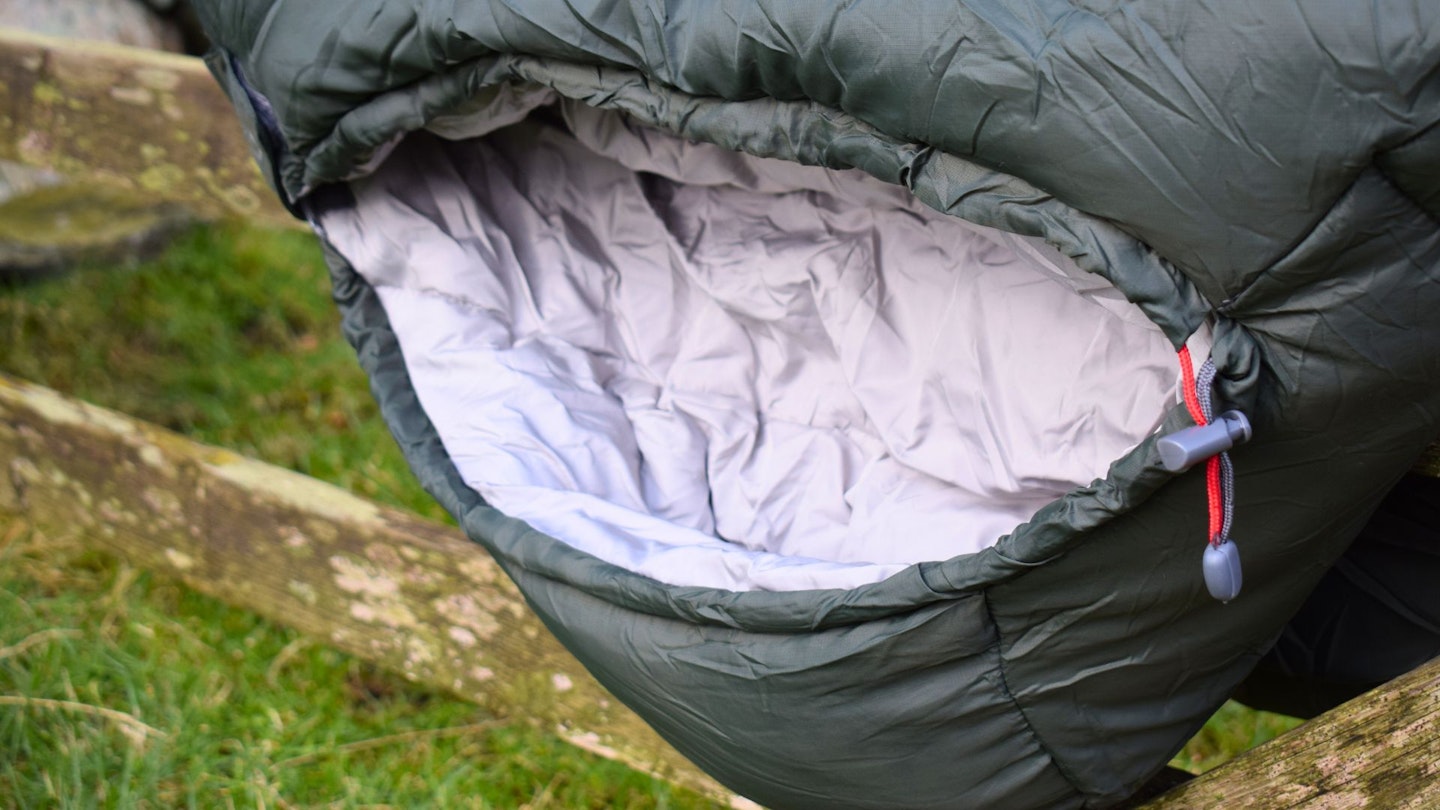
This sleeping bag has lots of good features. The YKK zipper, located on the lefthand side of the bag, works both ways, has a full-length insulated zip baffle (to keep the cold out), and includes an anti-snag zip guard. If you commonly camp with a partner, you can even use the main zippers to connect two Glacier bags together to form a double sleeping bag.
The hood is nicely designed with a comfy shape, and can be adjusted via a drawcord for a fine-tuned fit. Around the neck – a key point of vulnerability for heat loss – you get a thick baffle to minimise draughts. Another nice design touches include hanger loops, an internal Velcro stash pocket and a ‘shark fin’ shaped footbox, which has a special profile to allow your feet to rest in a natural, unrestricted position (although this only really works best for back sleepers).
One final feature is Robens ‘loft expander system’, which slightly pulls the inner lining away from the outer shell, to enhance loft space and retain heat. This provides enhanced warmth in the upper half of the bag.
Verdict

The Robens Glacier III -9C is a well-priced synthetic sleeping bag from a reliable brand with impressive temperature stats – but it’s heavy and bulky.
How we tested
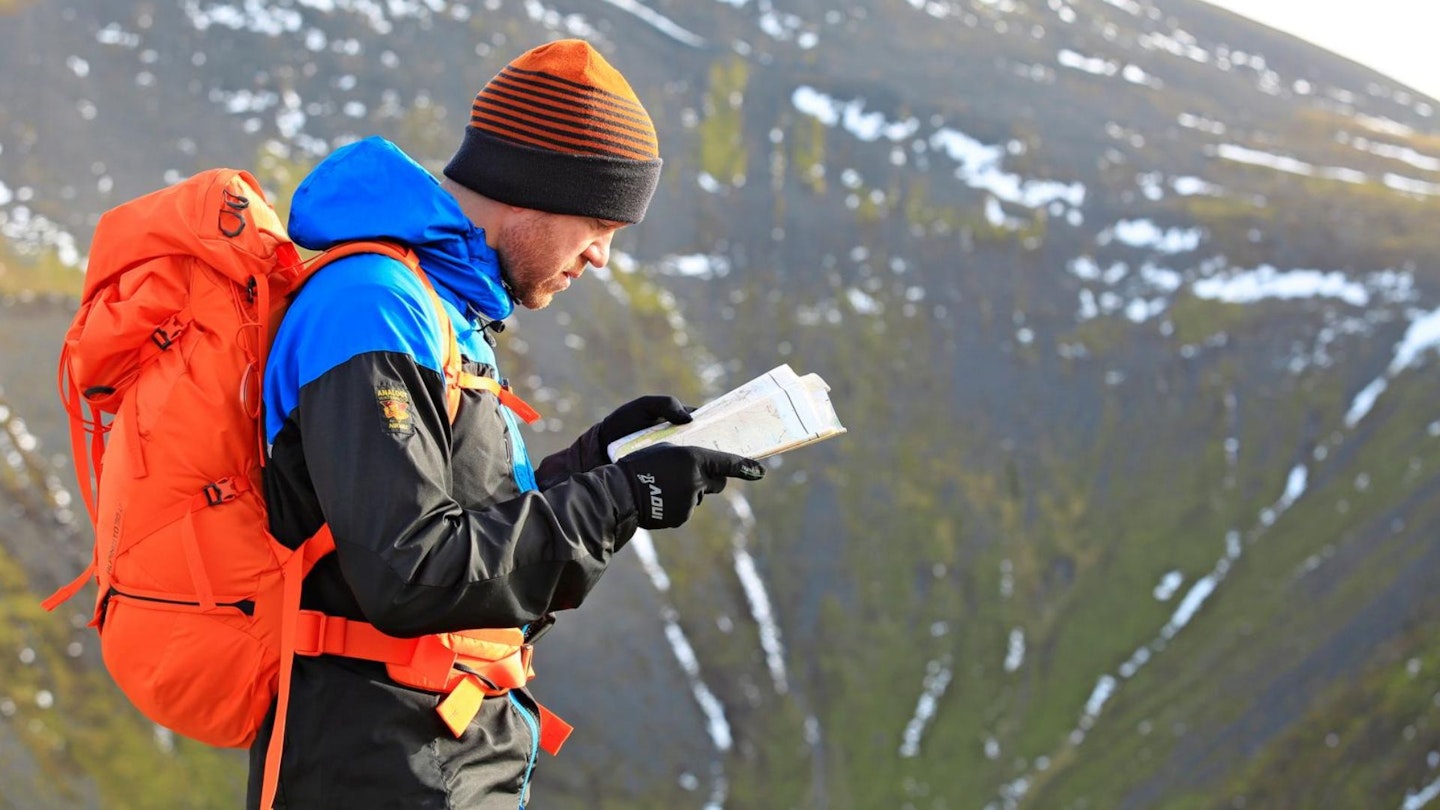
The Robens Glacier III -9C was tested and reviewed by James Forrest. James is a freelance outdoor writer who conducts gear reviews and writes features for LFTO and our magazine, Trail.
Based in the Lake District and a prolific peak-bagger, James is one of the most high-profile outdoor writers in the UK.
